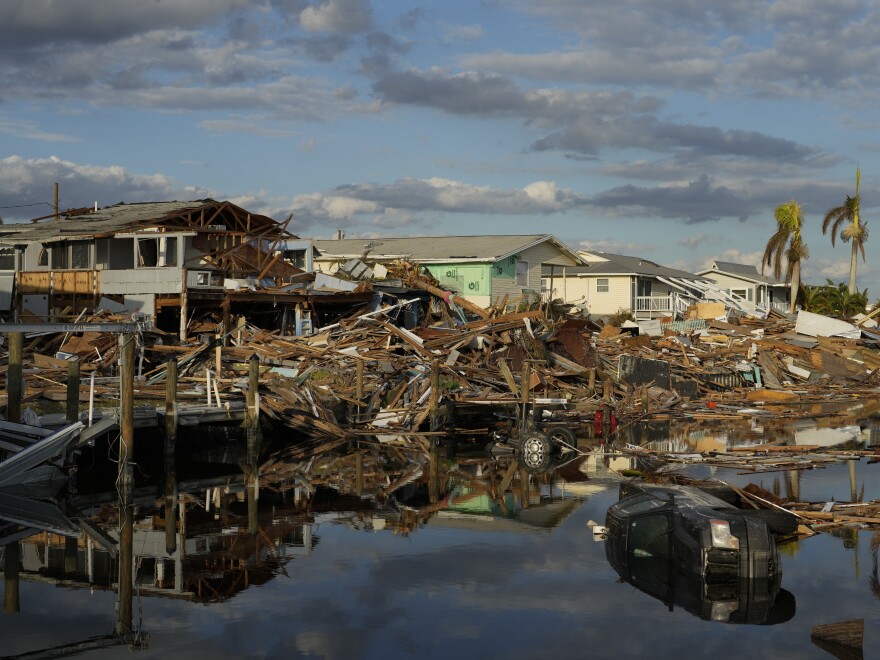Flooding and wind damage from hurricanes is getting more common in the United States, and that trend will accelerate and threaten millions of people as the Earth gets hotter according to new research.
The findings highlight a counterintuitive effect of climate change: coastal communities are experiencing dangerous storms more frequently, even though the total number of storms doesn't appear to be changing.
"I think it's important for the public to take [this] seriously," says Adam Sobel, a climate scientist at Columbia University who was not involved in the new study. "The storms are getting stronger. So even for the same number of storms, the number that are a real problem goes up because they are strengthening."
This trend is already clear for people living in places that have been hit by multiple devastating storms in recent years, such as southern Louisiana.
The new study uses computer models to assess Atlantic storms going back to 1949, and to peer into the future to see what storms will look like in 2100. The authors, climate scientists at Princeton University, found that the flood and wind risk posed by storms has steadily increased.
The problem will only get worse in the coming decades. "The frequency of intense storms will increase," explains Ning Lin, a climate scientist at Princeton University and the lead author of the new study.
Lin and her colleagues also found another sobering trend. Today it is unlikely that two damaging storms will hit the same place in quick succession, although such disasters got slightly more likely over the second half of the twentieth century.
When sequential storms do happen, it's deadly, like when Hurricanes Katrina and Rita hit the Gulf Coast in 2005 or when Hurricanes Harvey, Irma and Maria hit Puerto Rico, Florida and Texas in quick succession in 2017.
But by 2100, such consecutive shocks will become relatively commonplace, according to the new analysis.
That's bad news for multiple reasons. "Communities need to recover from disasters and bounce back," says Lin. If people are being hit by flooding and wind damage over and over, there's less time to recover.
It could also overwhelm the government's emergency response. That happened in 2017, when the Federal Emergency Management Agency struggled to respond to three major storms at the same time, and millions of people were left waiting for basic assistance with food and shelter.
Studies like this one offer important information about how to protect people from the effects of climate change, says Sobel. It matters where people live, and what that housing looks like. Right now, hurricane-prone areas, such as Florida, are seeing some of the fastest population growth in the country. "The financial industry, the insurance industry and homeowners all need to adapt to increasing hurricane risk," he points out.
Copyright 2023 NPR. To see more, visit https://www.npr.org. 9(MDA3NTgyODY4MDEzMDcxMjU4NjBlODYwNg001))







